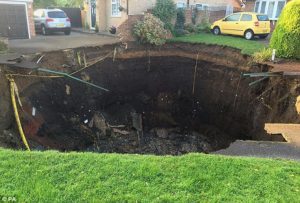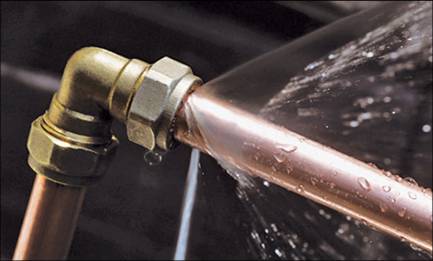Sinkholes are a phenomena that occur worldwide. A sinkhole is basically a term for any hole in the ground which is caused by erosion and the drainage of water. In size, they may just be a few feet length wise or even large enough to engulf entire buildings. While they are usually the result of a natural process, they can also be caused by human activity.
The Different Types of Sinkhole
In terms of types of sinkhole, there are two basic types. The first is those which are created over time, slowly. This is called a cover-subsidence sinkhole. The other type appear more suddenly, are called a cover-collapse sinkhole. Both are formed by the same basic mechanism, but obviously the latter are far more focussed upon in the media as the take people by surprise.
What Causes a Sinkhole?
Usually, sink holes occur in what is known as ‘karst terrain’; this is an area/areas of land which soluble bedrock (like limestone) can be dissolved by water.
With cover-subsidence sinkholes, the bedrock becomes uncovered and is then gradually worn down over a space of time. The hole consequently becomes a pond-type thing as the water fills the hole up.
With what is known as a cover-collapse sinkhole a similar process occurs when cracks and small voids underneath the surface are hollowed out by water erosion. Meanwhile, a cover of soil or sediment remaining over the top of the hole. Gradually, the hole will expand and this cover is no longer able to support its own weight and will suddenly collapse to reveal the cavern underneath.
Insurance for Sinkholes
Because a sinkhole can crop up around your home or an office space, shop or restaurant that you own. Albeit, they are rare in the UK, some choose to seek out insurance against sinkholes as a precaution as they can be very devastating.
The number of sinkholes recorded in Britain was 24, which followed from the strong rainfall that happened through the winter of 2013-2014. An example of a sinkhole which destroyed homes, was in St Albans in Hertfordshire where 20 residents had to be evacuated after a huge sinkhole measuring 66ft suddenly opened up over night.

Aviva has stated that home insurance customers are covered for sinkholes under the standard policy – the insurance policy covers damage made to a building which has been caused by subsidence of the land it stands upon, therefore this includes a sinkhole. Aviva also claim that if your home becomes uninhabitable, then they will pay for suitable alternative accommodation.
Direct Line have stated that they will pay out to customers who have had their homes damaged beyond the point of being able to live in them. They maintain that they would only ever get involved (therefore pay out) if the fabric of the building was damaged.
However, not all insurance policies include sinkhole cover and it may be necessary to seek specific sinkhole cover elsewhere. The only problem is, it can be hard to find. There appears to be no insurer who will cover this at any time, even Aviva had made exceptions for those who were effected in St Albans. However, the Financial Conduct Authority has stated that “The FCA rules outline what is expected of companies when they are selling insurance to ensure that customers are treated fairly and given clear and accurate information. The decision to offer certain insurance products is a commercial one for insurance companies”.


